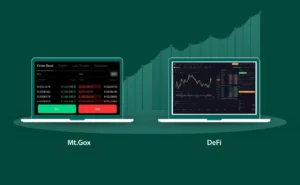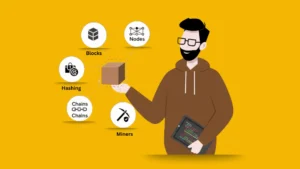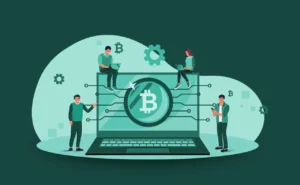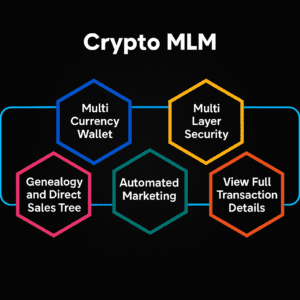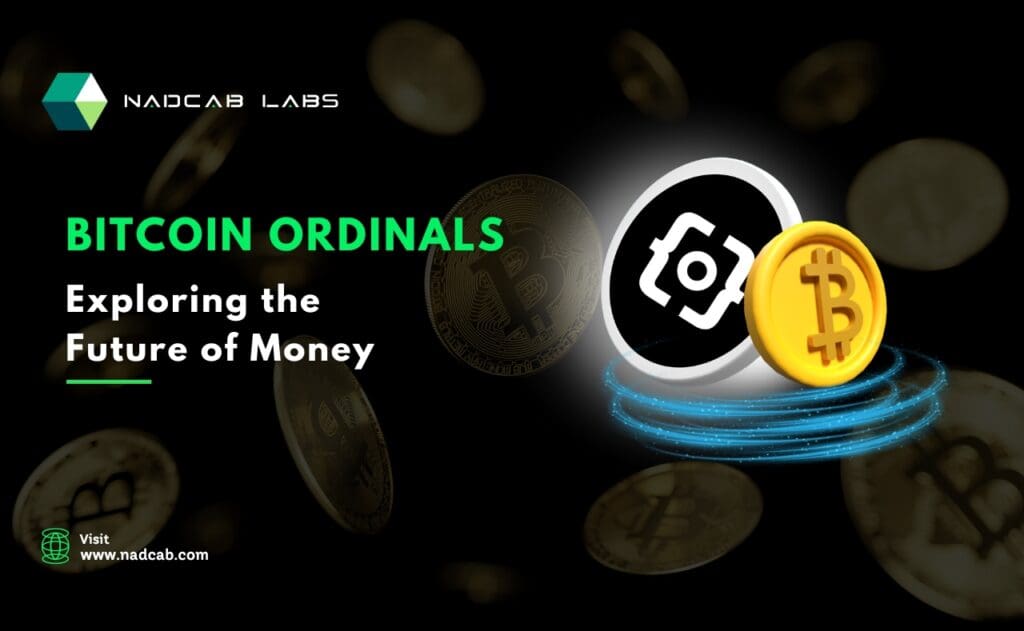
Bitcoin Ordinals is a unique concept within the blockchain and cryptocurrency ecosystem that introduces a way to inscribe data, such as NFTs (Non-Fungible Tokens), onto the Bitcoin blockchain. Unlike Ethereum, which natively supports smart contracts and NFTs through standards like ERC-721 and ERC-1155, Bitcoin was traditionally seen as a store of value and a medium for transactions. The introduction of Ordinals changes this perception by enabling NFT Development Services and the management of NFTs on Bitcoin.
Understanding Bitcoin Ordinals
To address the challenge of upgradability, developers can implement various techniques:
-
Definition
Bitcoin Ordinals are essentially sequences or numbers that are used to inscribe metadata directly onto satoshis (the smallest unit of Bitcoin). This metadata can represent anything from simple text to complex digital assets like images, videos, or smart contracts.
-
Mechanism
The mechanism behind Bitcoin Ordinals involves embedding data within the Bitcoin blockchain using the concept of “inscriptions.” Each ordinal is linked to a specific satoshi, and these inscribed satoshis can then be transferred and traded like any other Bitcoin.
-
Advantages
- Security-Benefits from Bitcoin’s robust security mechanisms.
- Decentralization-Leveraging Bitcoin’s highly decentralized and secure network.
- Immutability -Data inscribed on the Bitcoin blockchain is permanent and cannot be altered.
How to Create NFTs Using Bitcoin Ordinals?
-
- Step 1 Conceptualize Your NFT
Before diving into the technical aspects, conceptualize what you want your NFT to represent. This could be a piece of digital art, music, video, or any other form of digital asset.
-
- Step 2: Prepare Your Data
Prepare the data that you want to inscribe onto the Bitcoin Blockchain. This data should be in a format that can be easily inscribed onto satoshis, such as a text string representing a digital asset.
-
- Step 3: Inscription Process
The inscription process involves embedding your data into a satoshi. This can be done using specialized tools and protocols designed for Bitcoin Ordinals. Here’s a simplified example:
import hashlib
from bitcoin import SelectParams
from bitcoin.wallet import CBitcoinSecret, P2PKHBitcoinAddress
from bitcoin.core import lx, b2lx, COIN, COutPoint, CTxOut, CMutableTxOut, CMutableTxIn, CMutableTransaction, CTxInWitness
from bitcoin.core.script import CScript, OP_RETURN
# Select network parameters
SelectParams('mainnet')
# Your private key
private_key = CBitcoinSecret('your-private-key-here')
# Your public address
public_address = P2PKHBitcoinAddress.from_pubkey(private_key.pub)
# Create a new transaction
txin = CMutableTxIn(COutPoint(lx('txid'), vout))
txout = CMutableTxOut(0.0001*COIN, CScript([OP_RETURN, b'your-nft-data-here']))
tx = CMutableTransaction([txin], [txout])
txin_scriptPubKey = private_key.pub
txin.scriptSig = CScript()
txin.witness = CTxInWitness()
# Sign the transaction
sighash = b2lx(CScript())
sig = private_key.sign(sighash) + b'\x01'
txin.scriptSig = CScript([sig, private_key.pub])
# Serialize and send the transaction
serialized_tx = tx.serialize()
-
- Step 4: Broadcasting the Transaction
Broadcast the transaction to the Bitcoin network. This can be done using a Bitcoin node or through a blockchain explorer that supports transaction broadcasting.
-
- Step 5: Verify the Inscription
Once the transaction is confirmed, verify the inscription by checking the transaction on a block explorer. This ensures that your data has been successfully inscribed onto the Bitcoin blockchain.
How to Launch NFTs on Bitcoin?
-
- Set Up a Wallet
Set up a Bitcoin wallet that supports the storage and transfer of inscribed satoshis. This wallet will be used to manage your NFTs.
-
- Minting the NFT
Mint the NFT by creating and inscribing multiple satoshis with your desired metadata. This can involve creating a series of transactions similar to the one described in the inscription process.
-
- Listing on Marketplaces
List your NFTs on marketplaces that support Bitcoin Ordinals. As this concept is relatively new, specialized marketplaces or platforms might be required to facilitate the trade of these NFTs.
-
- Promote Your NFT
Promote your NFT using various channels such as social media, forums, and cryptocurrency communities to attract potential buyers and investors.
Best Blockchain for NFTs
-
Ethereum
Ethereum is the most popular blockchain for NFTs due to its robust smart contract capabilities and widespread adoption. Standards like ERC-721 and ERC-1155 are specifically designed for NFTs, making Ethereum the go-to platform for NFT creators.
-
Polygon (Matic)
Polygon provides a scalable Layer 2 Blockchain Solution for NFTs, offering lower fees and faster transactions by operating on top of Ethereum. This makes it an attractive choice for NFT projects looking to leverage Ethereum’s security while avoiding high gas fees.
-
Solana
Solana is known for its high throughput and low transaction costs. It has gained popularity as an NFT platform due to its ability to handle a large number of transactions quickly and efficiently.
-
Binance Smart Chain (BSC)
Binance Smart Chain offers a lower-cost alternative to Ethereum, with faster transaction times and lower fees. It supports NFT standards similar to Ethereum, making it a viable option for NFT creation and trading.
Technology Used in NFT Development
-
Smart Contracts
Smart contracts are self-executing contracts with the terms directly written into code. They are essential for creating and managing NFTs, ensuring that the ownership and transfer of digital assets are transparent and secure.
-
Solidity
Solidity is the primary programming language used for writing smart contracts on Ethereum and EVM-compatible blockchains. It is widely used in NFT development due to its robust features and support for complex logic.
Development Tools
-
Remix IDE
A web-based development environment for writing, testing, and deploying smart contracts.
-
Truffle Suite
A development framework for Ethereum that provides tools for compiling, testing, and deploying smart contracts.
-
Hardhat
A development environment for Ethereum that offers a flexible and extensible framework for building and testing smart contracts.
Decentralized Exchanges (DEXs)
-
OpenSea
OpenSea is the largest powerful decentralized marketplace for NFTs, supporting various blockchains like Ethereum, Polygon, and Klaytn. It allows users to create, buy, sell, and trade NFTs in a decentralized manner.
-
Rarible
Rarible is a decentralized marketplace that enables users to create and sell NFTs. It operates on the Ethereum blockchain and supports various types of digital assets, including art, music, and virtual real estate.
-
Binance NFT Marketplace
The Binance NFT Marketplace operates on the Binance Smart Chain and offers a platform for creating, buying, and selling NFTs. It benefits from the lower fees and faster transaction times of the BSC network.
-
Solanart
Solanart is a decentralized NFT Marketplace built on the Solana blockchain. It offers fast and low-cost transactions, making it an attractive platform for NFT creators and traders. Bitcoin Ordinals introduce a groundbreaking way to inscribe and manage NFTs on the Bitcoin blockchain, expanding the possibilities for digital assets on this historically transaction-focused network. Creating and launching NFTs using Bitcoin Ordinals involves several steps, from conceptualizing the NFT to inscribing data onto satoshis and listing them on marketplaces.
While Bitcoin offers a unique approach to NFTs, Ethereum remains the most popular blockchain for NFT creation and trading, thanks to its robust smart contract capabilities and widespread adoption. The Bitcoin Block Size plays a crucial role in Bitcoin’s transaction processing, although it’s less optimized for NFT trading compared to other blockchains. Binance Smart Chain, Polygon, and Solana also provide viable alternatives with lower fees and faster transactions. Understanding the technology behind NFTs, including smart contracts and development tools, is crucial for successfully creating and launching NFTs. Decentralized exchanges like OpenSea, Rarible, and Binance NFT Marketplace play a vital role in the NFT ecosystem, providing platforms for creators and traders to interact and transact.
As the NFT space continues to evolve, new innovations and platforms will emerge, further expanding the possibilities for digital assets and blockchain technology. Whether you’re an artist, developer, or investor, staying informed about the latest trends and technologies in the NFT world will help you navigate this exciting and rapidly growing industry.
Author Profile
Vartika Krishnani works at Nadcab Labs, helping businesses thrive online through effective SEO strategies that ensure they stand out on the internet. At Nadcab Labs, our mission is to drive business growth using cutting-edge technologies like blockchain and smart digital marketing.

